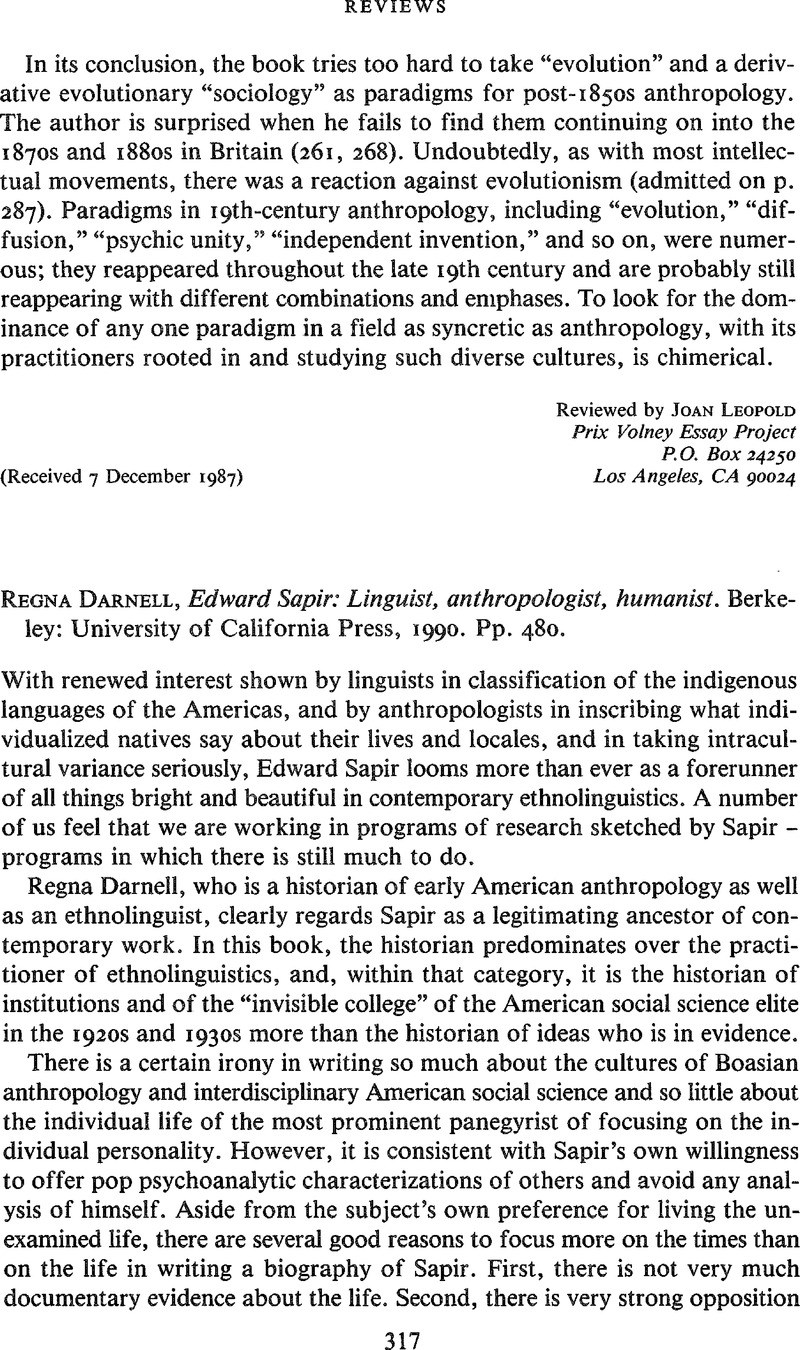Published online by Cambridge University Press: 05 January 2009

1. Although contemporary practice is to enroll native intuition in linguistic analysis, indeed to make alien linguists the auxiliaries in analysis by native speakers from within their languages, rather than the masters paying native models, we tend to join Bloomfield in preferring naturally occurring speech and distrusting self-reports about how people speak, as well as answers to questions of the form “Can you say x?* (“Is x well-formed/grammatical?”).
2. Darnell goes too far in asserting that, “Sapir followed the Boasian practice of studying all subdisciplines” (353). He though everyone should study linguistics, but he didn't think linguistic anthropologists, beginning with himself, had any need to study physical anthropology.
3. Often, Bloomfield's positions were closer to Boas, although Sapir, not Bloomfield, was Boas's student. In what Hymes calls “functionalist optimism,” Sapir and Boas contrasted with Bloomfield's view of “illiterate speech” (see 30). Boas and Sapir were both in some sense heirs of a Humboldtian tradition, though Sapir periodically expressed hostility to romanticism.
4. Indeed, having read a much longer manuscript, I can attest that they did! A number of studies in the history of North American social science beyond this biography should come out of Darnell's gargantuan research efforts.
5. While practically ignoring “the Sapir-Whorf hypothesis,” Darnell shows that Whorf was a leading figure among Sapir's postdoctoral followers at Yale during the late 1930s. And (contrary to 361, 364) Whorf taught Sapir's courses in 1937–38, rather than Morris Swadesh, who had taken up an appointment at the University of Chicago.